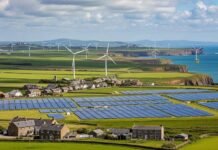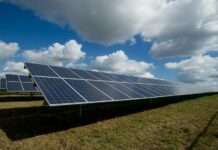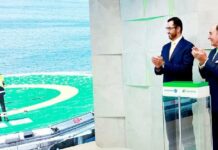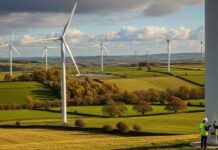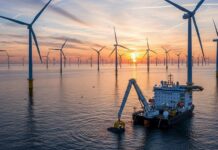As a result, France relies on nuclear energy for three quarters of its electricity needs and is now the world’s second largest nuclear operator in capacity terms, trailing the US but well ahead of Japan, Germany and Russia. The most recent nuclear project is Civaux.
CIVAUX 1 AND 2 PROJECT DESCRIPTION
Civaux 1 and 2 are France’s 57th and 58th operating nuclear power reactors. They are situated on the river Vienne, just south of Poitiers, and are the third and fourth units of France’s advanced 1,450MW N4 reactor series. Electricitรฉ de France (EDF) began seeking authorisation for the Civaux power plant in 1986 and received final government authorisation to begin construction in 1993.
Civaux-1 was first connected to the grid on December 24, 1997. It operated in test mode until May 1998, when it was taken off line for final tests before going to full commercial operation, originally scheduled for July 1998. A leak of primary coolant (see safety issues below) led to the shutdown and modification for all four N4 reactors. Civaux-1 finally began commercial operation in August 1999. Start up for Civaux-2, originally planned for mid-1998, was delayed to late 1999.
EDF’s Civaux project is the last nuclear installation of the current N4 series. France now has over 12,000MW of excess generating capacity. No further nuclear building is planned in France until the turn of the century, when Franco-German design and development of the next generation European Pressurised Water Reactor will be completed.
N4 PLANTS
EDF has put the cost of the Civaux units at $4.1bn. It claims other plants commissioned worldwide in recent years cost as much as 60% more than the N4 plants. The Civaux figure does work out to an impressive $1,349 per kWe, which is much lower than several foreign nuclear projects, and even around the level of some current large coal projects. EDF has not, however, revealed more than the top line figure to justify these calculations.
Once operating, the N4 plants should outperform conventional thermal units. EDF has stated Chooz B1’s operating costs are 10 centimes (2 cents) per kWh, compared to its estimates of gas-fired operating costs of 15 centimes (2.9 cents) per kWh and coal-fired costs of 13 centimes (2.5 cents) per kWh.
INVESTING IN FRANCE
EDF has explicitly structured its investment programme to promote French industry. Framatome has supplied all its nuclear plants and a host of French subcontractors provided components and services. Foreign suppliers have played a minor role, although Westinghouse was an important technology source in the early stages.
The EDF had estimated the 58 nuclear plants run by the state had an operating life of 30 years but in June 2008 the EDF extended that estimate by ten years to 40.
By 2025 it is estimated about one third of the country’s nuclear plants will have been in operation for 40 years.
REACTORS
Framatome’s reactor design was changed for the N4 series to allow the rise in output from 1,300 to 1,450MW (net). Its steam generator included tubes made of Inconel 690 to improve corrosion resistance. The number of fuel assemblies was raised from 193 to 205. Each fuel assembly comprises 264 fuel rods 4.26m in length.
The 23cm thick cast steel reactor vessel provides the first level of nuclear containment. This is then encased in a three-layer structure comprising, 1.2m of concrete, a 50cm compressed air gap and finally 60cm of reinforced concrete. Reactor shutdown takes 2.15 seconds.
TURBINES
GEC Alsthom NV won the contract to supply 1,500MW Arabelle turbine generators for the Civaux nuclear power station and they were built at the GEC Alsthom facility in Belfort, France. The Arabelle turbines for the N4 series are immense: the length of each unit is 51.2m, the width 12.8m, and the weight 2,810t.
But despite their size they are 12% lighter, shorter by 7m, more compact and more powerful than those supplied to EDF for earlier projects. Following the 1998 test period the new Arabelle turbines were modified to remedy problems encountered with blade damage.
COMMAND AND CONTROL SYSTEMS
Anglo-French Sema Group won the long term contract for N4 series command and control systems, reportedly worth some $200m. The Sema N4 systems include a database containing fifteen years (about 600 reactor years) of operating data from all EdF nuclear plants. The control room power supply is firstly derived from the station itself but can be backed up in case of emergency from the grid or directly from local hydro plant.
In extreme emergency there are stand-by generator sets. The Sema supply contract included an N4 simulator for training. The N4 system forms the base of control research for the future Franco-German reactor and Sema is likely to benefit from further nuclear plant control systems in the next series.
REACTOR SAFETY ISSUES
The new generation Civaux reactors have a greater dependence on computer control than older systems. EDF had met a 1 July 1999 deadline for satisfying the regulatory authorities that French reactors are safe to run over the new year. Civaux 2 computers were advanced to 1 January 2000 and no anomalies occurred. As in other reactors fundamental safety systems are not dependent on computers and are not susceptible to Y2K problems.
“By 2025 it is estimated about one third of the country’s nuclear plants will have been in operation for 40 years.”
Civaux-1 reactor was shut down in May 1998 following a leak of primary coolant from a pipe in the residual heat removal (RHR) bypass system. Cracks in welded joints were discovered in a pipework elbow.
The cracks were clearly the result of thermal fatigue caused by the turbulent mixing of hot and cold flows just upstream of the elbow. The RHR pipework has now been redesigned and replaced at all four of EdF’s N4 units. RHR pump bypass lines with signs of thermal crackling were also replaced.
DISEASE-CARRYING AMOEBAE
Civaux-1 was ready to restart in early June, but then EDF were required to install an ultraviolet treatment system to kill disease-bearing amoebae. The amoebae, which can cause a rare form of encephalitis, were first seen in the summer of 1998 in cooling circuits at other French nuclear plants (Dampierre, Golfech and Chooz).
It was felt that a similar problem was likely in Civaux’s titanium condenser tubes. Elsewhere chlorine or peracetic acid has been used to disinfect the cooling circuits, but this could not be used for Civaux because the flow rate of the Vienne river would have been too low to disperse the toxic chemical discharge. The reactor finally became operational again in August 1999.



